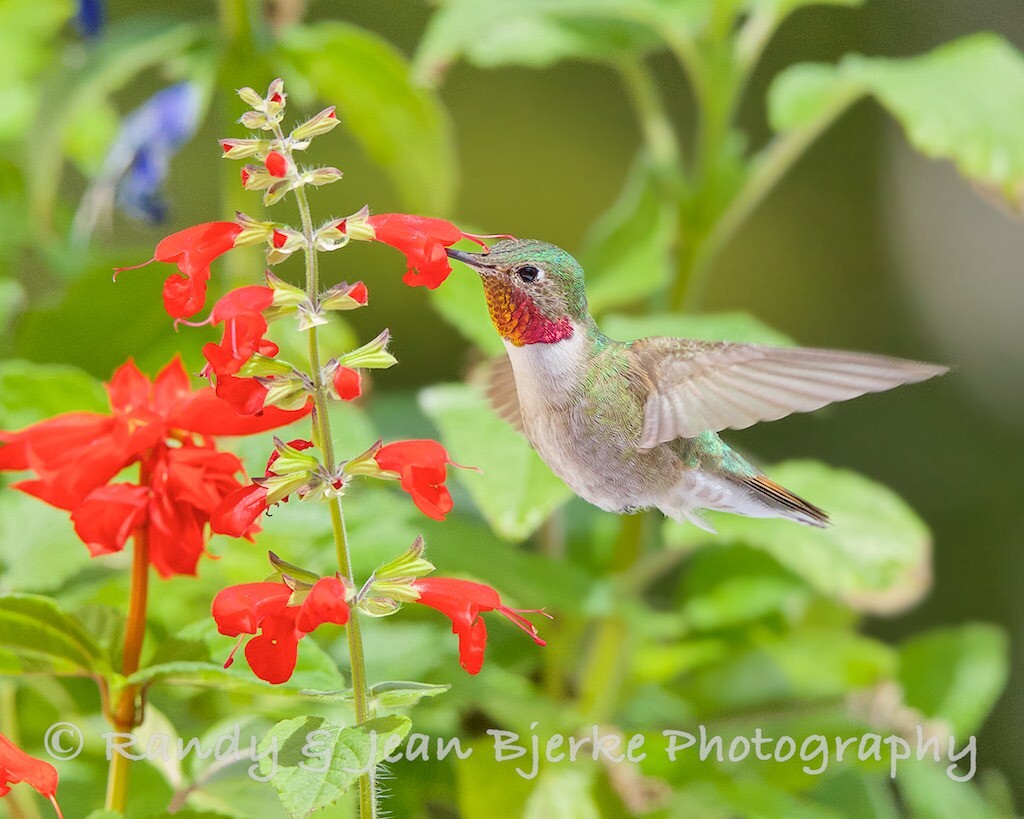Article and photo by Jean Bjerke
Hummingbirds are beautiful jewels of color and marvels of aerodynamics. Their wings beat up to 80 beats per second, and they are the only birds that can fly backward. The average weight of a hummingbird is about the same as a nickel, but they have amazing endurance, and certain species migrate up to 4,000 miles from Mexico to Canada and Alaska. Some fly non-stop 500 miles across the Gulf of Mexico during migration.

Hummingbirds are named for the humming noise of their wings, which flap 50 to 80 times per second. Found only in North and South America, there are more than 300 species of hummingbirds. Their plumage is often very colorful, especially the throats of the males. They sip nectar from flowers through their long tubular bills and also eat pollen and insects.
Most hummingbirds are found in the tropics, but three species of hummingbirds are found in Island Park in summer. They all leave in late summer to migrate to Mexico for the winter.
The Broad-tailed Hummingbird (pictured) has an iridescent rose-red throat, white chest, and metallic green back and crown. The Rufous Hummingbird male is bright orange or rust-colored; the female is orange and green. The Rufous Hummingbird travels the farthest north of any hummingbird, all the way to Alaska. The Calliope Hummingbird is the smallest bird in North America and also visits Island Park in summer. This bird is about 3 inches long and weighs a tenth of an ounce. Hummingbirds readily come to feeders, but bird feeders in Island Park are major attractants for grizzly and black bears! Fish and Game recommends you not put up bird feeders at all. If you insist on a feeder, bring it in at night to avoid attracting bears. Better yet, ask a nursery to recommend plants that attract hummingbirds, and attract them naturally as in this photo of a Broad Tailed Hummingbird at a potted salvia plant.
